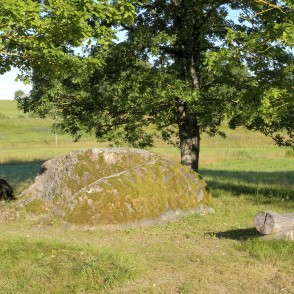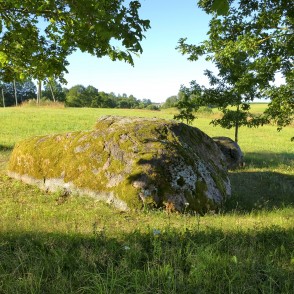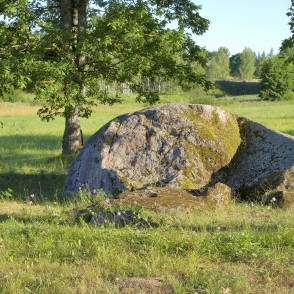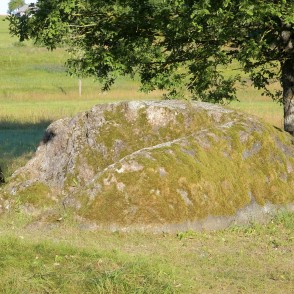The rock is 4 metres long, 2,8 metres wide and 1,4 metres high. Researchers do not agree with a meaning of carvings in a rock, most often they are related with decedent or Heavens cult. Estonian researchers these kind of hollow rocks date with second half of the year one thousand BC and Latvian researchers and archaeologists are using same dating. It is believed that on the second half of the year one thousand BC, decedent and fertility cult rituals were held here. 80 similar rocks have been found in Latvia.
sites.google.com/koceni.lv
State archaeological heritage (State Inspection for Heritage Protection, No 2416). The first stone of this type discovered in the territory of Latvia that has been granted the heritage status. In 1925 it was discovered by a researcher A. Štāls. It is remarkable due to its 32 roundish conical hollows on the surface (diameter up to 15 cm, depth up to 7 cm) that are typical for cult stones widespread in Northern Europe. It is believed that in the second half of the 1st millennium BC at such stones the rituals of the dead and fertility were held. Other versions about the usage of hollows are as follows: for placing offerings, for astronomical observations, that the stone was used as a peculiar musical instrument, as well as for acquiring powder for healing needs. Dating – from the Stone Age to the Medieval Age (J. Urtāns. 1990. Footprint Stones, Boundary Stones, Trough Stones (Pēdakmeņi, robežakmeņi, muldakmeņi)). The dimensions of the stone: length of 4 m, width of 2.8 m, and height of 1.4 m. Other nearby objects: Dikļi, Burtnieki Lake, Mellači Stone. Situated within the territory of the North Vidzeme Biosphere Reserve.
www.ancientsites.lv




